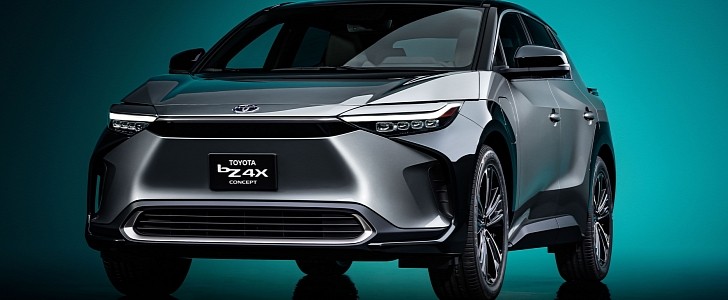Toyota already sold a pure EV. It was the RAV4 EV. In its first generation, it used nickel-metal hydride batteries and a heat pump. The second one had a Tesla battery pack. It seemed that the company would take a long time to sell an EV again, but then it announced the bZ4X. Toyota’s new electric SUV would have a battery pack that would retain 90% of its capacity after a decade. It would also be 30% less expensive than those used by competitors.
The Japanese carmaker announced that in Tokyo after also disclosing that it will invest 1.5 trillion yen ($13.7 billion) in battery development until 2030. Automotive News said that the company would put that money not only in bringing solid-state cells to market but also in a next-generation lithium-ion battery that will cost half as the bZ4X battery pack after 2025.
Masahiko Maeda, Toyota’s CTO (chief technical officer), told Automotive News that it would sell EVs with solid-state batteries by 2025. The company would already be testing a working prototype with these cells since 2020. Solid-state batteries promise to be much lighter, safer, and energy-dense than the current ternary cells used in most battery packs.
Despite that, Toyota still believes hybrid vehicles have a role in the automotive world. It may use solid-state batteries on them if engineers can make power output and stability match in the right proportions. Nickel-metal hydride cells also deserved some attention, and the new Aqua now presents one with bipolar structure. According to Toyota, that solution allowed it to double the power density of these batteries.
In 2030, Toyota expects to sell 8 million electrified vehicles, of which 2 million would be pure electric cars and FCEVs. The carmaker did not want to establish a precise number for which sort of vehicle would account for the larger share of these 2 million units. That shows that Toyota firmly believes fuel cell cars will reach substantial sales volumes. Like Hyundai, it just has to tell us who will sell the hydrogen these vehicles will need to run.
Masahiko Maeda, Toyota’s CTO (chief technical officer), told Automotive News that it would sell EVs with solid-state batteries by 2025. The company would already be testing a working prototype with these cells since 2020. Solid-state batteries promise to be much lighter, safer, and energy-dense than the current ternary cells used in most battery packs.
Despite that, Toyota still believes hybrid vehicles have a role in the automotive world. It may use solid-state batteries on them if engineers can make power output and stability match in the right proportions. Nickel-metal hydride cells also deserved some attention, and the new Aqua now presents one with bipolar structure. According to Toyota, that solution allowed it to double the power density of these batteries.
In 2030, Toyota expects to sell 8 million electrified vehicles, of which 2 million would be pure electric cars and FCEVs. The carmaker did not want to establish a precise number for which sort of vehicle would account for the larger share of these 2 million units. That shows that Toyota firmly believes fuel cell cars will reach substantial sales volumes. Like Hyundai, it just has to tell us who will sell the hydrogen these vehicles will need to run.















